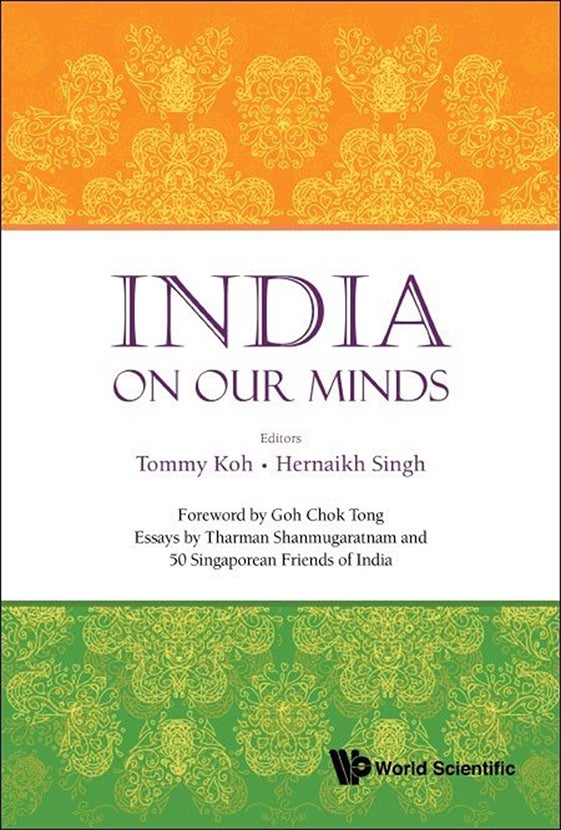
| Title: | India On Our Minds |
| Author/s: | Tommy Koh, Hernaikh Singh |
| Abstract: | Singapore and India established diplomatic relations in August 1965. However, their ties date as far back as the 10th century. The last half century has seen a blossoming of their relationship. The two countries' warm and substantive friendship is based upon history, economics, defense cooperation and a high degree of mutual trust. The relationship is quite unique because a significant portion of Singapore's population consists of ethnic Indians and an Indian language, Tamil, is one of Singapore's official languages.
The book brings together 52 of Singapore's thought leaders. They come from different sectors of the Singapore's society. Each of them has written an essay on India's past or present or future. Each essay is short, easy to read and full of insight and humour. One of the writers is Singapore's Senior Minister, Mr Tharman Shanmugaratnam, a person who is admired both in Singapore and in India. The book includes essays on Nalanda University, Amaravati, India-Singapore Comprehensive Economic Cooperation Agreement and the Regional Comprehensive Economic Partnership. On the lighter side, the book contains two charming essays by Ambassador Karen Tan and Eirliani Abdul Rahman on their time in India. The book's foreword is written by Mr Goh Chok Tong, Singapore's second Prime Minister. It was Mr Goh who overcame prejudice and inertia and launched a new beginning in Singapore-India relations. This publication is a candid reflection of India and India-Singapore relations by Singaporeans who carry the hope that India will rise above its challenges to join the ranks of the great nations of the world. It will be of interest to Singaporeans who are interested in India and Indians who are interested in Singapore. |
| Date: | 7 December 2020 |
| More From: |
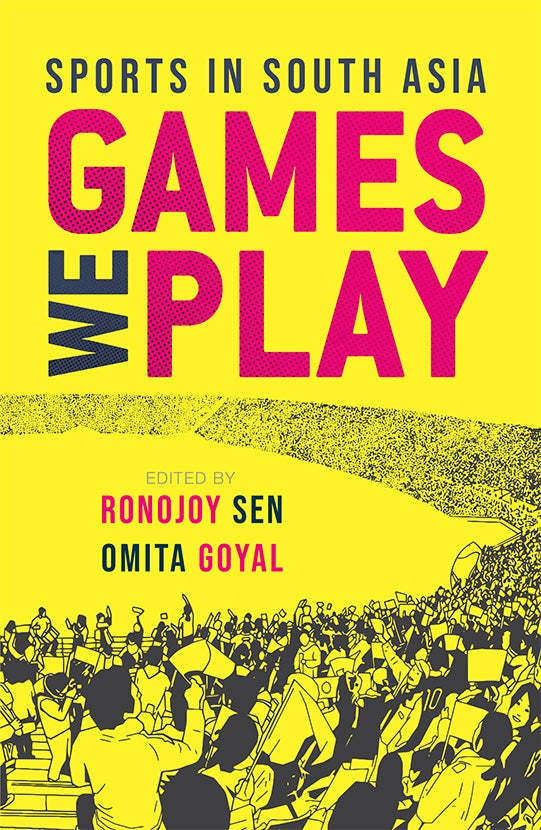
| Title: | Games We Play |
| Author/s: | Ronojoy Sen, Omita Goyal |
| Abstract: | This book looks broadly at the evolution of sport and play in India and South Asia, those that enjoy mass popularity as well as those that are marginal, situating them in the region's history, society and economy. It is a valuable addition to the study of sports in South Asia, which remains underdeveloped, with a significant bias towards cricket. Avoiding personality-based narratives, focusing only on successful sportspersons, this volume looks at the different sports played and watched in South Asia: from popular ones such as hockey, football, and badminton, to more local ones such as boat racing in Kerala |
| Date: | 14 October 2020 |
| More From: |
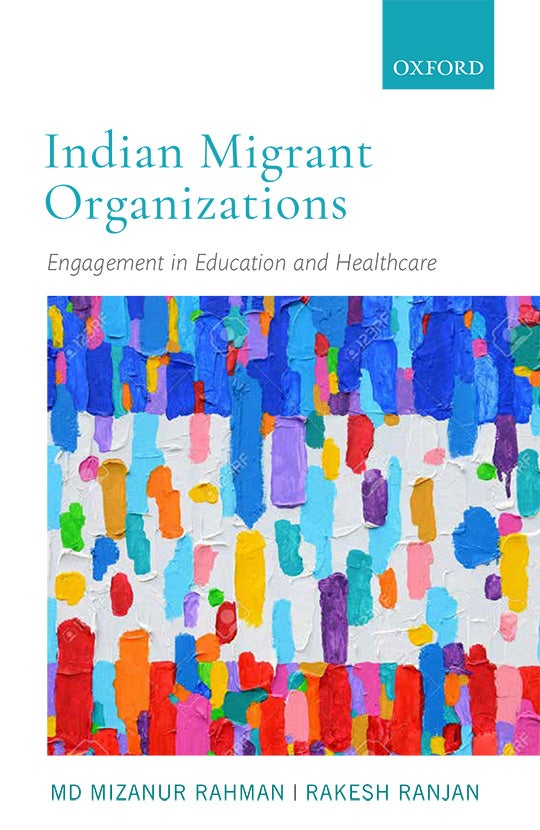
| Title: | Indian Migrant Organizations |
| Author/s: | Md Mizanur Rahman, Rakesh Ranjan |
| Abstract: | The Indian diaspora is increasingly engaging with the homeland by forming a range of migrant organizations — organizations constituting a growing sector of non-State actors who engage with the host country and the country of origin in a sustained and profound way.
Research on migrant organizations tends to focus only on transnational migrant organizations in host countries. Indian Migrant Organizations analyses a set of local and transnational organizations formed by Indian migrants, whose activities include mobilizing resources and connections and engaging in numerous development initiatives in India, and studies their engagement particularly in the Indian healthcare and education sectors. In particular, the book discusses how these organizations have evolved, what kind of healthcare and educational projects and activities they are carrying out, and how such collective efforts are affecting development dynamics in India. |
| Date: | 24 September 2020 |
| More From: |

| Title: | Contested Waters India’s Trans boundary River Water Disputes In South Asia |
| Author/s: | Amit Ranjan |
| Abstract: | This book examines India’s transboundary river water disputes with its South Asian riparian neighbours — Pakistan, Bangladesh, Nepal and Bhutan. It explores the history of disputes and cooperation over the transboundary river water in this region as well as discusses current disputes and future concerns. It analyses how and why existing transboundary river water sharing treaties between India and its South Asian riparian neighbours are confronted with challenges. The book indicates that India’s transboundary river water disputes with its South Asian riparian neighbours are likely to escalate in coming years due to the widening of the demand¬–supply gap in the respective countries. It further shows the impact of bilateral relations on the resolution of transboundary river water disputes, even as cordial relationships do not always guarantee the absence of river water disputes between riparian states. The book looks at some key questions: How political are India’s transboundary rivers water disputes in South Asia? Why do the roots of India’s river water disputes with Bangladesh and Pakistan lie in the partition of the British India in 1947? Why are there reservations against India’s hydroelectricity projects or allegations of water theft? Is it possible to resolve transboundary river water disputes among these South Asian countries?
This book will greatly interest scholars and researchers working in the areas of river management, environmental politics, transnationalism, water resources, politics and international relations, security studies, peace and conflict studies, geopolitics, development studies, governance and public administration, and South Asian studies in addition to policymakers and journalists. |
| Date: | 7 September 2020 |
| More From: |
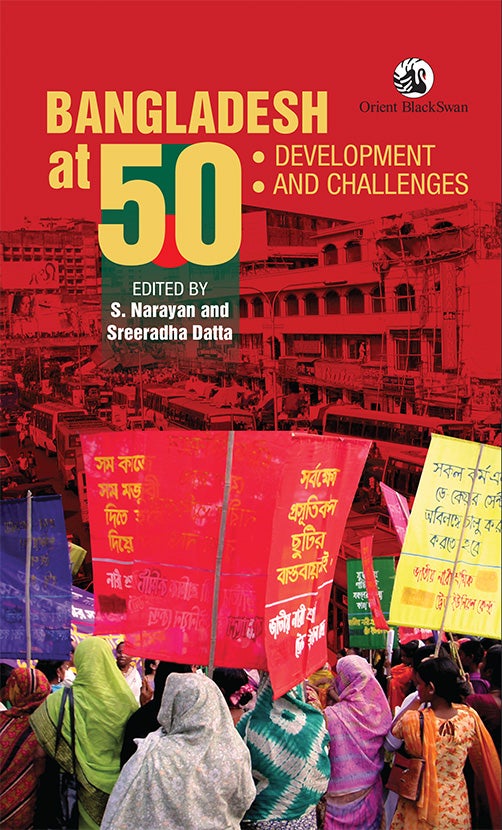
| Title: | Bangladesh at 50: Development and Challenges |
| Author/s: | S Narayan, Sreeradha Datta |
| Abstract: | At present, Bangladesh is one of the fastest growing economies in Asia, which has transitioned to a middle-income country, progressing significantly in terms of both development and social welfare parameters. Recognised as a multi-party democracy, Bangladesh has improved its energy and transport sectors, maintained better human development indicators than its neighbours, and lifted a substantial section of its population from abject poverty. Bangladesh at 50 traces the country s history since 1971, while also commenting on the possible concerns that societal, political and institutional structures are likely to face in the future. The chapters study Bangladesh s relationship with the world and with India; the role played by multilateral funding agencies and the success of two major NGOs, the Grameen Bank and BRAC; the development of trade and exports as well as the garment industry; issues related to the environment and water; and Islamisation and militancy, along with the role of women in society. Together, they tell the story of Bangladesh from different perspectives while recognising the fault lines created by religious extremism in a fractured polity. |
| Date: | 1 August 2020 |
| More From: |
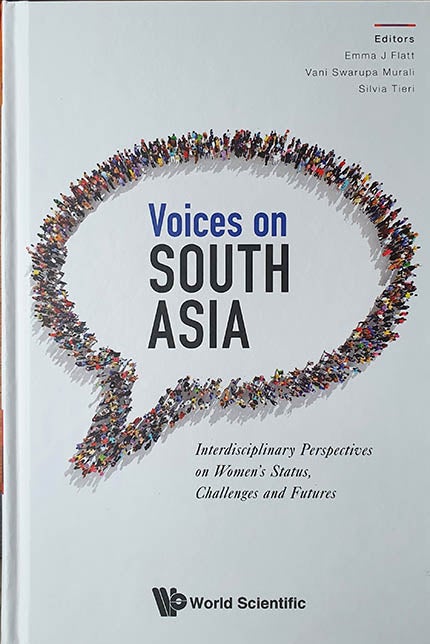
| Title: | Voices on South Asia: Interdisciplinary Perspectives on Women’s Status, Challenges and Futures |
| Author/s: | Emma J Flatt, Vani Swarupa Murali, Silvia Tieri |
| Abstract: | This book investigates the contemporary social, political and economic issues faced by women in South Asia. It focuses on the policies and practices that have challenged or perpetuated gender inequalities, and the evolving role of women in South Asian societies. With contributions from practitioners, policy makers, academics and civil society activists from across South Asia, this volume provides a broad and diverse range of viewpoints on South Asian women's labour force participation, political participation, education, and health, as well as country-specific insights.
The volume is conceived as a stage for debate where specific insights act as a window into wider themes, practices and policies. Each essay is followed by policy-relevant recommendations and suggestions for avenues to improve current practice. This book will be relevant for undergraduate students and lecturers of South Asian studies, development, and policy studies, as well as industry practitioners. |
| Date: | 1 July 2020 |
| More From: |
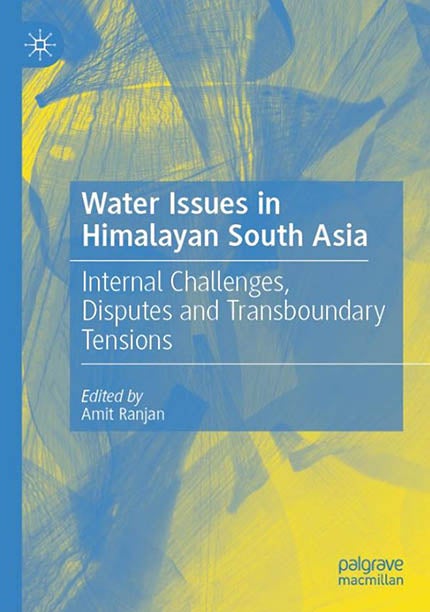
| Title: | Water Issues In Himalayan South Asia |
| Author/s: | Amit Ranjan |
| Abstract: | The book looks into the domestic water issues and disputes in the Himalayan South Asian countries and based on it analyses trans-boundary water disputes. Himalayan South Asia comprises India, Pakistan, Bangladesh, Nepal, Bhutan, and Afghanistan. All except Afghanistan share river waters with India. Home to some of the major river basins of the world, a part of this region falls into water scarce zone, and according to the United Nations Water Report of 2018 some of them will experience severe water scarcity by 2050.
The book also studies water issues in China. Though the country is not a part of the Himalayan South Asia, most of the major rivers of this region originate in China. Over the years, China has been alleged by countries like India for diverting, choking, or using the trans-boundary river waters for its purpose. Understanding water competition and issues in China will help one to understand its transboundary water behaviour. |
| Date: | 7 February 2020 |
| More From: |
Load more


